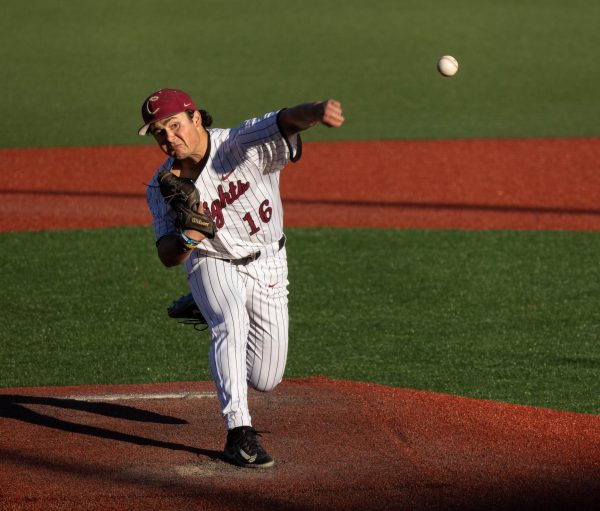Hō‘ike event aims to educate community, celebrate the diverse culture of Hawai’i
April 4, 2022
Oregon State University’s Hui O Hawai’i club is changing the name of their student-led event from luau to Hō‘ike with the aim to better represent the culture of Hawai’i.
Hō‘ike will take place on April 16, with tickets going on sale at the beginning of spring term. The annual event has been put on by the Hui O Hawai’i club for nearly 67 years and has been known to celebrate the culture of Hawai’i with food, festivities and dance each spring.
This year, however, both the name and format of the event has shifted to better showcase and educate Hawai’i’s culture.
“The name change was brought up after the 2018 show, brought up by other officers and we made a unanimous decision,” said Jalen Nishihara, a Hō‘ike co-coordinator for Hui O Hawai’i. “We all agreed we liked the name change, it steers away from the stereotypical luau… They do see the luau dancing but they don’t really get the education behind Hawai’i or even how hula came about. Hō‘ike is just so much more meaning.”
According to Chara Kekona, Hui O Hawai’i club president, the misunderstanding of what a luau is dates back to when foreigners would visit the islands and be greeted with a taro leaf and big feast, causing them to think of a luau as the special event that was happening, when luau actually translates to a part of a taro leaf. In Hawai’i, Kekona said, when something is called a luau, that implies food is the main event, not the show that is being put on.
“Hō‘ike, the new name, literally translates to the term exhibit or a show,” Kekona said. “That is more reflective of what the event is.”
This year, the event aims to tell the story of hula through the ages, Ke Au O Ka Hula. The story plans to move from the ancient Hawai’i kahiko era—kahiko being the traditional form of hula that was once banned—to the overthrow of Queen Liliuokalani then into the Hapa Haole era, which is when the islands became a tourist destination and English was more heavily incorporated into songs. The story concludes at the Modern Auana with forms of dance seen today.
“As the largest student-run event on campus, it gives us a really good platform to educate people,” Kekona said. “Some other schools across the west coast are also making that name change.”
Hō‘ike Show Coordinator Michaella Manuel-Sagon said she wanted to put on a show like they do in Hawai’i, complete with a cohesive story to educate community members about the history of Hawai’i, in part so they can be more mindful and informed when visiting the islands.
“I just want everyone to enjoy the show, I want them to feel like they are a part of our culture and make them feel like they are in Hawai’i,” Manuel-Sagon said.
The menu, which is also changing this year to match the theme and better represent Hō‘ike, will include many rice-based and Asian fusion dishes.
“We created it to be more of a local spin, it’s not just going to be traditional lau lau and kalua pig, it’s going to be more stuff that was brought over from all the different cultures,” Manuel-Sagon said.
The coordinators and Hui O Hawai’i club members have been planning this year’s event since the beginning of the academic year and began learning the dances in late January.
“This is a really big event for the Hui O Hawai’i club,” Nishihara said. “A lot of people don’t know a lot about Hawaiian culture or Hawaiian history so I think this is a really big and important event. It’s cool because it isn’t just students, its community members in Corvallis. It really brings out a sense of pride for everyone who was born in Hawai’i.”

























































































































